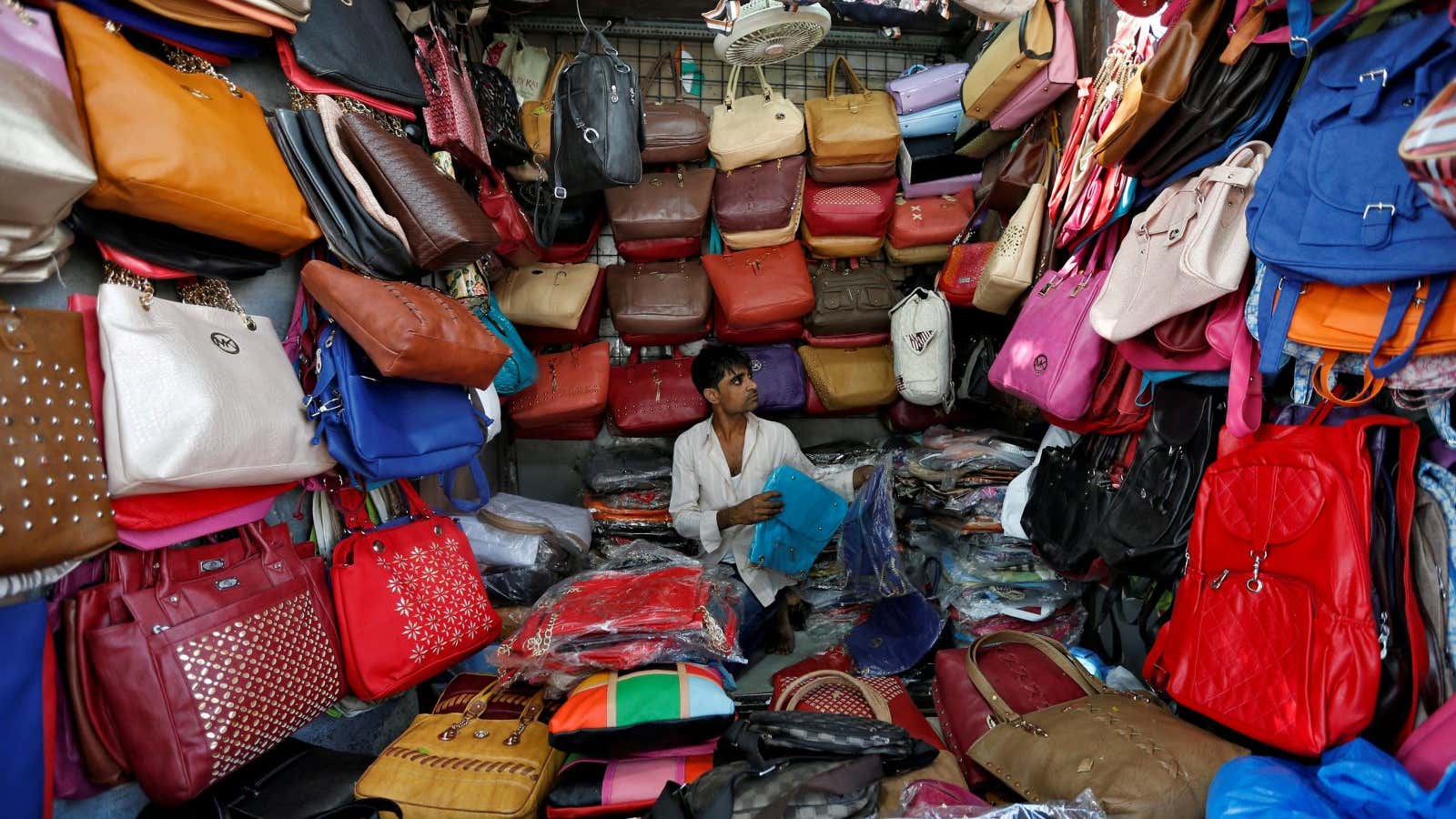For all the excitement over India’s booming consumer economy, the country’s shoppers are still frugal in buying clothes.
India’s spending on apparel and footwear is expected to hit $70 billion by 2020, up from $63 billion for the year ended March 2017, according to a new report by retail insight company Fung Global Retail and Technology. Indians spent $645 billion on retail overall in the same year. In per capita terms, though, India still trails other major economies and BRIC nations. For instance, in 2015, per capita apparel consumption in India was just $45, compared to $172 in China.
By 2025, India’s per capita spend is expected to jump to $123, but it won’t be catching up with the rest of the world anytime soon.
“That means (apparel consumption per capita) will still be lower in 2025 than it was in 2015 in the other BRIC nations and many of the world’s large developed economies…” the report says.
That’s because India’s much-talked about retail explosion is still a relatively new phenomenon, and largely urban.
For years, Indians relied on traditional wear and local brands for their wardrobes. Of late, however, foreign companies such as Zara, Gap, and H&M have brought in much more options, capitalising on growing disposable incomes and changing tastes in big cities. While affluent and aspirational urban Indian households are now more willing to spend on branded clothing and shoes, there’s a whole other segment that remains out of reach: Close to 67% of India’s population still lives in villages, where spending huge sums on western clothing is hardly a priority.
Moreover, India lags far behind other countries when it comes to retail infrastructure, with a shortfall of good quality malls and shopping spaces. Nearly 89% of shopping in India still occurs at traditional neighbourhood stores, Fung noted in its report, adding that the country ranks the lowest among the major markets when it comes to the modernisation of the retail industry.
That means it’s going to take a long time before India’s per capita spending on discretionary items matches that of other nations.
But there is a silver lining: India’s demographics. The country is home to a massive population of young people, and Fung expects this will help companies sell even more denims and dresses in the years to come.
